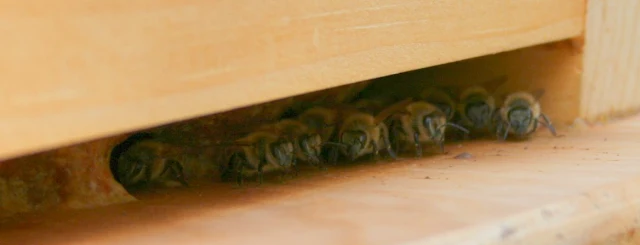 |
| Honey Bee on Garlic Chives |
Yesterday, four nurses were a little freaked out by the redness and swelling (larger than their palm) I showed after getting my allergy shots. "Hmmm… let me ask another nurse what she thinks," said one, then another, and the next. Then came a barrage of questions. Are you feeling okay? You're not having any other symptoms, are you? Did you ice? This amount of redness is normal for you? Are they itchy, did you scratch? Did you take an antihistamine? What kind?
After looking at the computer and seeing I get venom shots, the freak out calmed down a bit. Venom shot reactions can often be more intense than pollen shot reactions. But all the hullabaloo got me thinking. And then I remembered. I'd taken an NSAID for a headache the evening before.
One time, I took a migraine-strength NSAID the day before getting allergy shots, and ended up having what looked like a severe systemic reaction that sent me "back for treatment." Being sent to the back for anaphylaxis treatment set me back months in my therapy, so it was a very costly turn of events. There is some research that shows NSAIDs may provoke systemic allergic reactions to bee stings, and apparently it's true for VIT "stings" as well. Remember, a maintenance dose of venom is the equivalent of two stings.
After looking at the computer and seeing I get venom shots, the freak out calmed down a bit. Venom shot reactions can often be more intense than pollen shot reactions. But all the hullabaloo got me thinking. And then I remembered. I'd taken an NSAID for a headache the evening before.
One time, I took a migraine-strength NSAID the day before getting allergy shots, and ended up having what looked like a severe systemic reaction that sent me "back for treatment." Being sent to the back for anaphylaxis treatment set me back months in my therapy, so it was a very costly turn of events. There is some research that shows NSAIDs may provoke systemic allergic reactions to bee stings, and apparently it's true for VIT "stings" as well. Remember, a maintenance dose of venom is the equivalent of two stings.


























